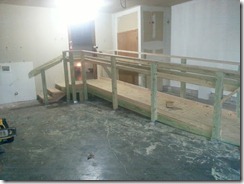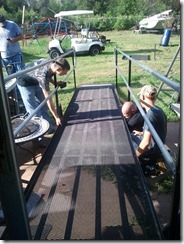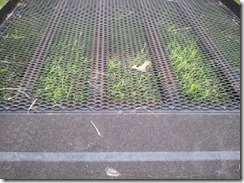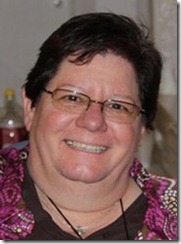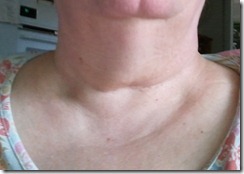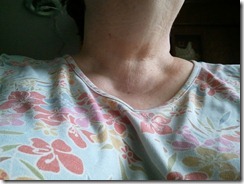Those of you who followed me here from my blog on Multiply will remember Endo2, an arrogant, incompetent who knew almost nothing about Cushing’s Syndrome and wrote a five page clinic report discussing signs (things you can see)and symptoms (things you can’t see) I did not have, as well using language (though not the actual word) that described me as a hypochondriac, desperate for an unnecessary surgery. He reminds me of President Zaphod in
Hitchhiker’s Guide to the Galaxy who said “If there's anything around here more important than my ego, I want it caught and shot now!” Yep, that’s Endo2.
I had been initially diagnosed with Cushing’s by a doctor in St. Louis. Endo2 is local to me and took great offense that I had seen another endo first. Thus his five page rant against my diagnosis. After I read it, I never went back to him. (This is why we need to have copies of all our medical records. Without a copy of that report, I might have stayed under his incompetent care and died before getting a curative surgery.)
Endo3 was a well-recognized California specialist in Cushing’s. He confirmed the diagnosis and sent me to surgery in Wisconsin, where I met Endo4 who would be onsite if there were any complications during or after surgery. After surgery I continued under Endo3’s care, where I have been quite content. The trouble is that Endo3 is 1,500 miles away and appointments are now done by phone. He doesn’t accept any insurance, so I have to pay out of pocket and wait for reimbursement from my insurance company. But my insurance company won’t pay for phone appointments. Still, paying for phone appointments out of pocket is not as expensive as traveling back to California for another face-to-face appointment—even if the insurance will reimburse part of the office charge.
Recent illness, however, has made me try once again to find a local endocrinologist—one who is familiar with my adrenal issues and takes my insurance. I like knowing that if I end up in the ER or hospital room a doctor who knows me and my medical history will be available to walk in and see that I get proper care. So PCdoc referred me to Endo5.
I looked at his online bio and discovered that we both earned our bachelor degrees from the same small town regional state university, Northeastern State in Tahlequah. He earned his medical degree at OSU in Stillwater. Both excellent but non-uppity schools. A good start.
At the appointment, he walked in with his laptop, put it on the table (forcing him to sit with his back to me), and apologized for having to take time to set up a new patient file.
“We can’t do anything without our computers these days,” I joked.
“I can,” he sighed, “but they won’t let me.” And--true to the new medical exam model--the appointment continued with more check boxes than eye contact. He was all business, spoke softly, had a gentle touch, and paid attention when I spoke. He never interrupted me. He explained with sufficient depth (not too much or too little) and in plain language. He did not challenge my diagnosis, blame me for my obesity or diabetes, or treat me like I was anything less than a partner in my medical care.
Endo5 ordered more labs (who didn’t see that coming?) and told me to quit worrying about trying to wean off the steroids. He explained that most people naturally produce about 30 mg of cortisol a day. So, if I am stable on 15 mg of hydrocortisone, my lone adrenal gland is doing half the work. He thinks that if that is all the adrenal is doing after twenty-eight months post-op, remaining stable is a better goal than weaning off completely. 15 mg is a low dose that he says is not suppressing my adrenal, raising my blood sugar or blood pressure, or causing weight gain. He’s happy with that. I’m happy with that. PCdoc will be happy with that.
I will still have times that I will need more steroids to deal with extra stress, but being stable on a regular dose makes life much more manageable. No more painful weaning.
Endo5 is a gentleman and a gentle man. He’s intelligent, caring, reasonable, respectful, easy to talk with, and struggling to keep those check boxes subordinate to good medical practice. Zaphod, he ain’t.
I think I’m going to like Endo5.
